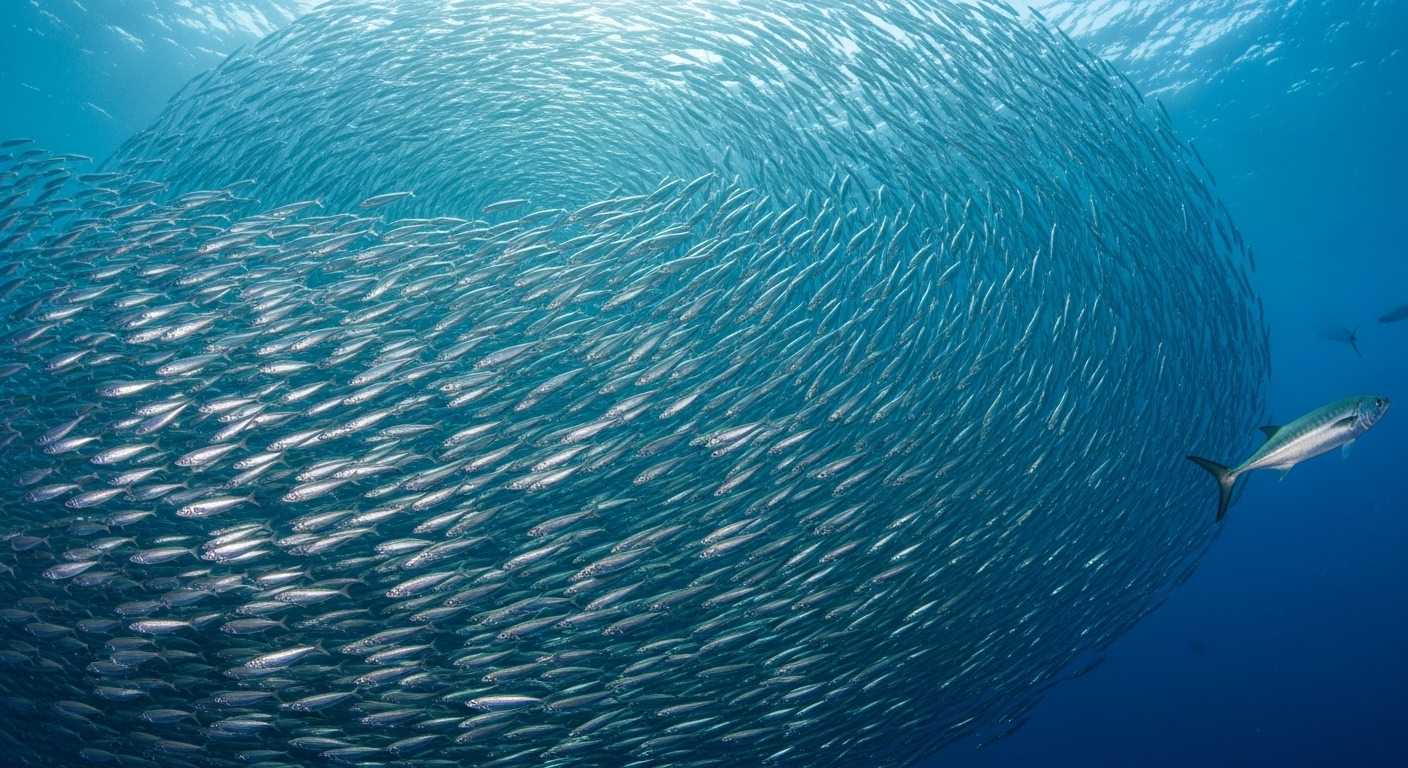Underwater Choreography: The Mesmerizing World of Fish Shoaling
In the vast expanse of our planet's oceans, rivers, and lakes, a captivating spectacle unfolds beneath the surface. Fish shoaling, a mesmerizing phenomenon where hundreds or even thousands of fish move in perfect synchronization, has long fascinated marine biologists and casual observers alike. This article delves into the intricate world of fish shoaling, exploring its evolutionary significance, the complex mechanisms behind it, and its impact on aquatic ecosystems.

The Origins of Shoaling Behavior
The practice of fish shoaling dates back millions of years, with fossil records showing evidence of this behavior in ancient marine environments. Paleontologists have discovered fossilized shoals of fish from the Eocene epoch, approximately 50 million years ago, suggesting that this collective behavior has been a successful survival strategy for an incredibly long time.
Shoaling likely evolved as a response to the constant threat of predation in aquatic environments. By swimming together in large groups, individual fish could reduce their chances of being singled out and eaten. Over time, this behavior became more sophisticated, with fish developing complex social structures and communication methods within their shoals.
The Science Behind Synchronized Swimming
At the heart of fish shoaling is a remarkable ability for individuals to coordinate their movements with incredible precision. This synchronization is achieved through a combination of visual cues, lateral line sensing, and social learning. Each fish in the shoal constantly monitors the position and movement of its neighbors, making split-second adjustments to maintain formation.
Recent studies have revealed that fish use a simple set of rules to maintain their positions within a shoal. These rules include maintaining a certain distance from nearby fish, matching their speed and direction, and avoiding collisions. By following these basic guidelines, hundreds or even thousands of fish can move as one cohesive unit, creating the illusion of a single, giant organism.
Benefits Beyond Predator Protection
While protection from predators is a primary advantage of shoaling, this behavior offers numerous other benefits to fish. Shoaling can improve foraging efficiency, as more eyes searching for food increase the chances of locating resources. Some species even use their shoals to herd and trap smaller prey, making it easier to feed large numbers of individuals.
Shoaling also plays a crucial role in the reproductive strategies of many fish species. During breeding seasons, large shoals can serve as meeting grounds for potential mates, increasing the chances of successful reproduction. Additionally, some species use their shoals as nurseries, providing protection and guidance for young fish as they grow and develop.
The Role of Technology in Studying Shoaling
Advancements in technology have revolutionized our understanding of fish shoaling behavior. High-speed cameras and sophisticated tracking software now allow researchers to analyze the movements of individual fish within large shoals, providing unprecedented insights into the mechanisms behind this collective behavior.
Underwater drones and autonomous vehicles equipped with advanced sensors are being used to observe shoaling behavior in the wild without disturbing natural patterns. These technologies are helping scientists uncover new information about how shoals respond to environmental changes, predator threats, and other stimuli in real-time.
Shoaling in a Changing World
As our planet’s aquatic ecosystems face increasing threats from climate change, pollution, and overfishing, the importance of understanding fish shoaling behavior has never been greater. Changes in water temperature, acidity, and oxygen levels can all impact the ability of fish to form and maintain shoals, potentially disrupting this critical survival strategy.
Conservation efforts are now focusing on preserving not just individual species, but entire shoaling communities. By protecting the habitats and environmental conditions that support shoaling behavior, researchers hope to maintain the delicate balance of aquatic ecosystems and ensure the survival of countless fish species that rely on this remarkable collective behavior.
In conclusion, fish shoaling represents one of nature’s most spectacular displays of coordination and collective intelligence. As we continue to unravel the mysteries behind this underwater choreography, we gain not only a deeper appreciation for the complexity of aquatic life but also valuable insights that could inform fields ranging from robotics to human crowd behavior. The mesmerizing world of fish shoaling serves as a powerful reminder of the intricate connections that exist within our planet’s ecosystems and the importance of preserving these delicate balances for future generations.





